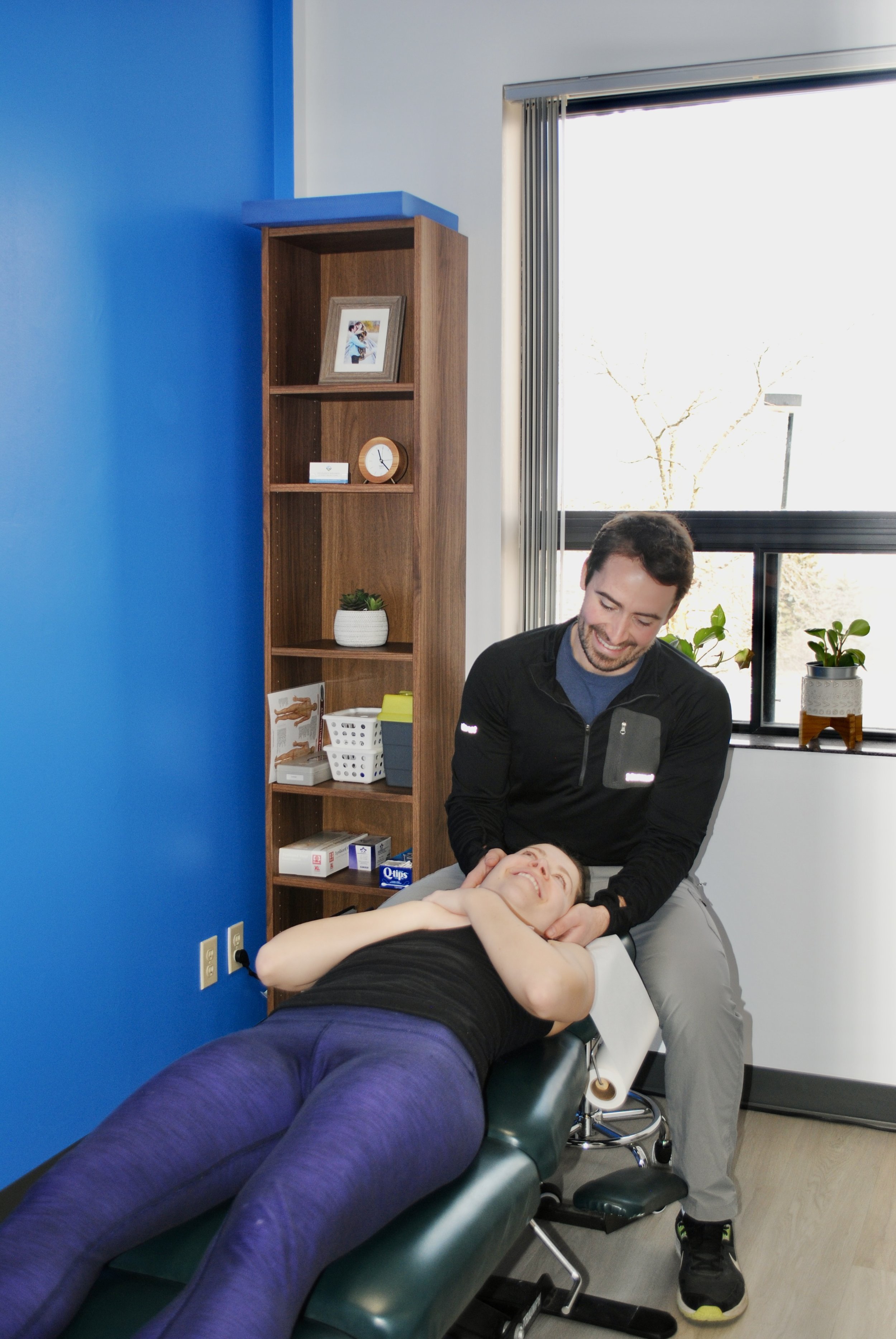3 Things to Know About Chiropractic Adjustments
Adjustments, spinal manipulation, bonesetting and back cracking are all pretty much the same thing. Chiropractors have used these techniques for hundreds of years to help patients, and before that, traditional healers had been using “bonesetting” techniques since at least some time in ancient Greece by a guy name Aesculapius.
But, just because something has been around a long time doesn’t mean we should blindly trust it. My own understanding of the benefits, risks, and uses for chiropractic adjustments has changed a lot in the last 5 years. This blog will cover three things I think my patients should know regarding adjustments when we’re planning a course of treatment.
Nobody “needs” an adjustment. We have options.
The benefits of adjustments are that they improve symptoms and can help facilitate additional movement in our joints. The symptom improvement is especially helpful in acute pain situations such as when we tweak our low back or a rib because it can provide a ton of relief very quickly. The additional movement is helpful for building back function after an injury and ensuring we return to our full range of motion at each joint.
I’ve had patients who were referred to me and were nervous because they didn’t want me to crack their neck. That doesn’t offend me in any way, and I actually don’t get my neck cracked either (more on that below).
The adjustment is one of many tools I have available to help with muscle and joint pain - we have plenty of other options if the adjustment is either high-risk or simply not preferred.
We’re not re-aligning the bones. You’re stronger than that.
It might feel like we are putting bones back in place, straightening out the spine, or levelling the hips with an adjustment, but the current research says this is likely not the case. Imagine your bones really could go out of place - every football, rugby, hockey, basketball, and lacrosse player would be crippled within the first few weeks of the season.
What is likely happening when we get that feeling of something being “back in place”, is that the adjustment is providing a TON of sensory input to the body and the brain. The adjustment is helping clear up some fuzzy or unpleasant input. It’s like taking a decongestant after a head cold - suddenly the world feels like sluggish and foggy.
The adjusted joints will likely feel better and move better, but we shouldn’t worry that the joint will go “out of place” if we move the wrong way.
I get fired up about this idea, because I think it’s important that my patients know their bodies can be resilient and strong. If we’re constantly worried that we’re fragile and just waiting to fall apart, I think that’s a huge disservice to everyone.
Adjustments are generally safe but nothing is 100% risk-free.
Story-time: when I was in school we had to practice adjusting on our fellow students. It’s the type of thing you have to learn by doing. I must have had every bone in my body jumped on, twisted up, and cracked hundreds of times in those 4 years.
It was normal that something would feel a bit wonky after an adjustment (remember that we were just students learning). Over time I started to notice that the right side of my neck wouldn’t budge, and actually felt worse with adjustments. I made the decision not to get that area adjusted anymore since it was generally unpleasant and ineffective for me.
I’ve come to learn that I likely have a congenital blocked vertebrae high up in my neck. This is a benign condition, but when you try and move a bone that isn’t designed to move, it will eventually just hurt. Asides from X-RAYs for every single patient who comes in my office (which I don’t recommend), there was no easy way to tell that I would be a bad candidate for neck adjusting.
Luckily, other than some mild soreness and sitting through classes with a stiff neck, no major harm ever came from adjusting me. The serious side effects often have warning signs that we look for carefully (but even then, no medical intervention can be 100% risk-free).
In conclusion, adjustments are great, and so are a lot of other approaches.
I still love getting my upper and low back adjusted as I get a ton of relief from it. I basically live my life either bent over patients or bent over our toddler at home, so getting an adjustment in those stiff joints goes a long way for keeping me comfortable.
In my opinion, adjustments are simply a helpful tool that some people really enjoy and get a lot of benefit from, and some people don’t.
Just like I wouldn’t want hire a carpenter who only owns a hammer, I try not to be a one-trick pony either.
Many of my patients have awesome results with soft tissue work, education, and strengthening, and we don’t even introduce adjustments because it might not be relevant, appropriate, or desired. I also have patients who have seen chiropractors throughout their life and find that a monthly adjustment is just what they need to keep feeling good.

